Colorado Armature: Westone UM Pro 30/50 Headphone Review
Hi, Giktayms! Many large companies, as you know, were founded almost from scratch: the founders of Apple assembled the first computers in the garage, and Jeff Bezos from Amazon sold books, sometimes working as a courier. In a similar scenario, the story of Westone headphone maker from Colorado Springs began: a small family business turned into a big company that could compete with eminent brands in the sound market. During its history, which has been around for several decades, Westone has realized the classic “American dream”, making a name for itself on rebar headphones.

Of course, in the 60s of the last century, “armatures” already existed, but mostly they were used either in military or for medical purposes, making hearing aids noticeably smaller and more comfortable to wear. Later, the market for headphones with a balanced anchor was replenished with consumer models, but manufacturers created them in most cases universal, forgetting that people have a different structure and shape of the ear. Westone paid attention to this, deciding to engage in the production of in-channel audio devices for a specific shape of the auricle.
Almost until 1990, the company successfully manufactured custom-fit headphones: for this, the specialists first poured a special molding foam into the ear canal of the client, which hardened in the ear and allowed it to be similar to the shape of a future earphone. Then a casting mold was created from the cast, and the “stuffing” of the device was born.

Others quickly turned their attention to such an unusual way of creating headphones. Etymotic company generally simplified the process - sent the user the foam with which he made the form of his ear canal, and then sent it back to the manufacturer to make headphones. However, the accuracy of this method was questionable, and by the 90s of the 20th century, no one but Westone could produce more accurate channel forms, so the two companies began to work together. Then they were joined by Shure, Ultimate Ears and other brands.
Over time, Westone began to enjoy great popularity among musicians. When the latter needed high-quality headphones, they knew where to go, and the manufacturer himself received their ear casts, the number of which exceeded several thousand. Westone's clients included the Red Hot Chilli Peppers, the Rolling Stones, and Alex Van Halen himself. And initially, Van Halen turned to the legendary Jerry Harvey with a problem, because during the concerts the musicians hardly heard each other because of the drum set, and Harvey had already followed those same custom-fit to the Westone.

The choice of Westone knowingly fell on rebar headphones, because they not only allow to combine high-quality sound and compact dimensions. Anchor emitters fit freely in a small case, closed on all sides, besides they are free from distortions caused by the shape of the diffuser. Now Westone headphones are used almost everywhere - from American military aviation to medicine (digital earplugs protect hearing from loud noises), but today we’ll talk about the followers of the UM Pro 30 and Um Pro 50 consumer accessories line, because the whole UM Pro series isn’t long ago received an update.
The UM line is designed specifically for musicians, so the production of these headphones Westone suited very responsibly. Headphones are assembled by hand in the USA, and although the ear canal casts are not made by the company, the kit includes as many True-Fit silicone and foam nozzles with memory effects of different sizes that everyone can find the right ear cushions for a comfortable fit. Compared to the previous line, the new UM Pros have a more interesting design, thanks to which the components inside the case can now be considered even better. Although the technical characteristics have not changed (except for the UM Pro 10, the impedance was reduced to 19 Ohms), but the Westone heard their fans and added cables with the latest MMCX connectors.
The entire line is represented by the UM 1 (with one radiator), UM Pro 10, UM Pro 20 (two radiators), UM Pro 30 and UM Pro 50 models. They decided not to take a closer look at the last two versions: the UM Pro 30 is the most popular model in series, and the UM Pro 50 - the most powerful.
UM Pro 30 is a three-driver model, where each channel has a separate radiator for medium, low and high frequencies. The inscription "MONITOR" was not in vain here, since the main task of these headphones is to monitor the music on the stage when the musician performs the track. In the studio, no one prohibits the use of them either, but first of all the manufacturer provides a solution that perfectly isolates from extraneous noise.

In the UM Pro 50 , as it is not difficult to guess, there are already five drivers, and the main differences between the headphones from the 30th model lie precisely inside and in sound - both models look almost the same. Unless the transparent case gives out the senior model in a ruler.

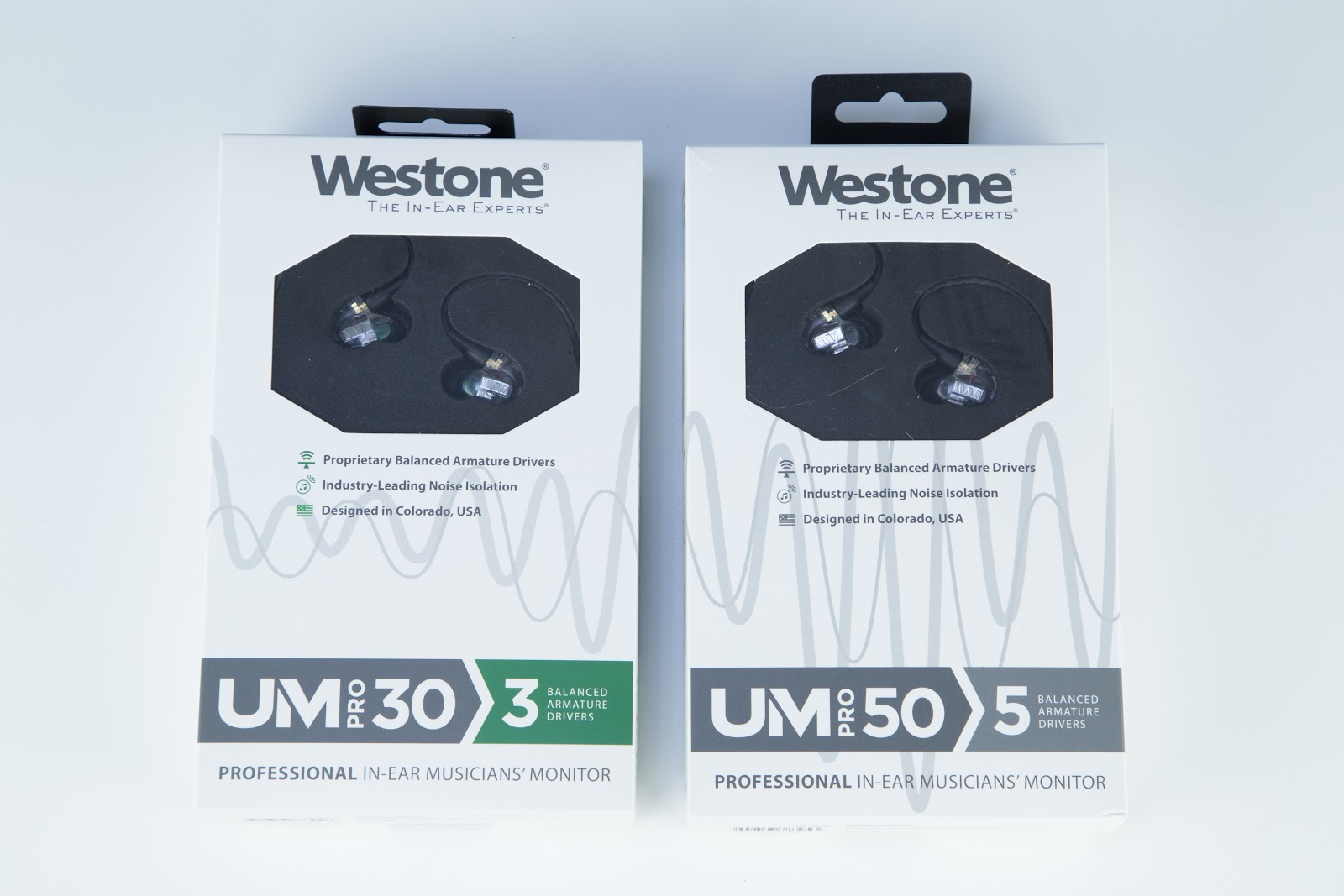
The UM Pro 30 and Um Pro 50 are identical in delivery (except that the headphones themselves are different). The first thing that catches your eye is a small shockproof case for carrying headphones, from the inside it is covered with a special foam material to minimize mechanical effects.
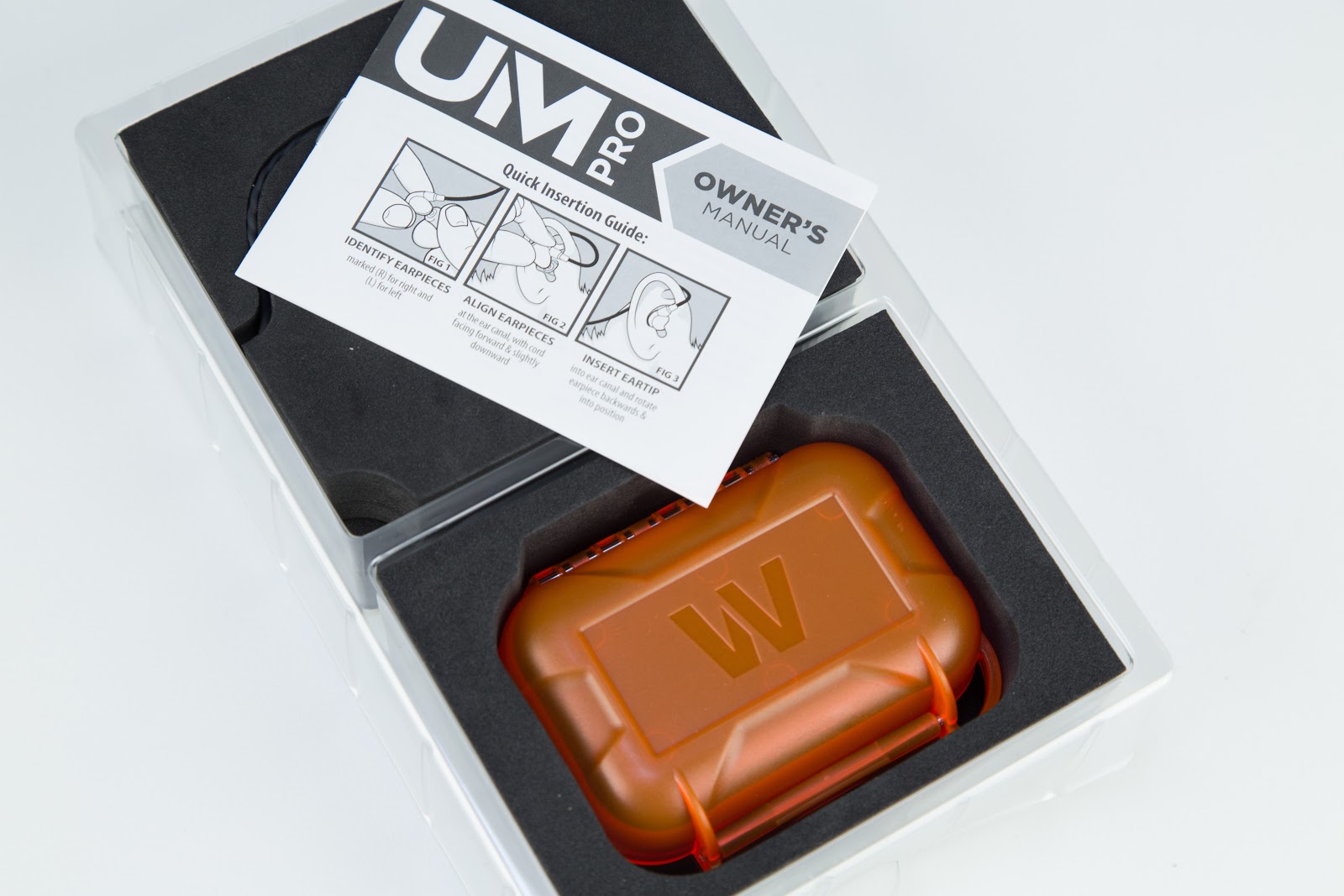
You open the case and at first you are at a loss: where are the interchangeable nozzles? After all, they are usually put here to save space. Westone decided to use the box space to the maximum and placed a bag with ear pads under the headphones themselves.

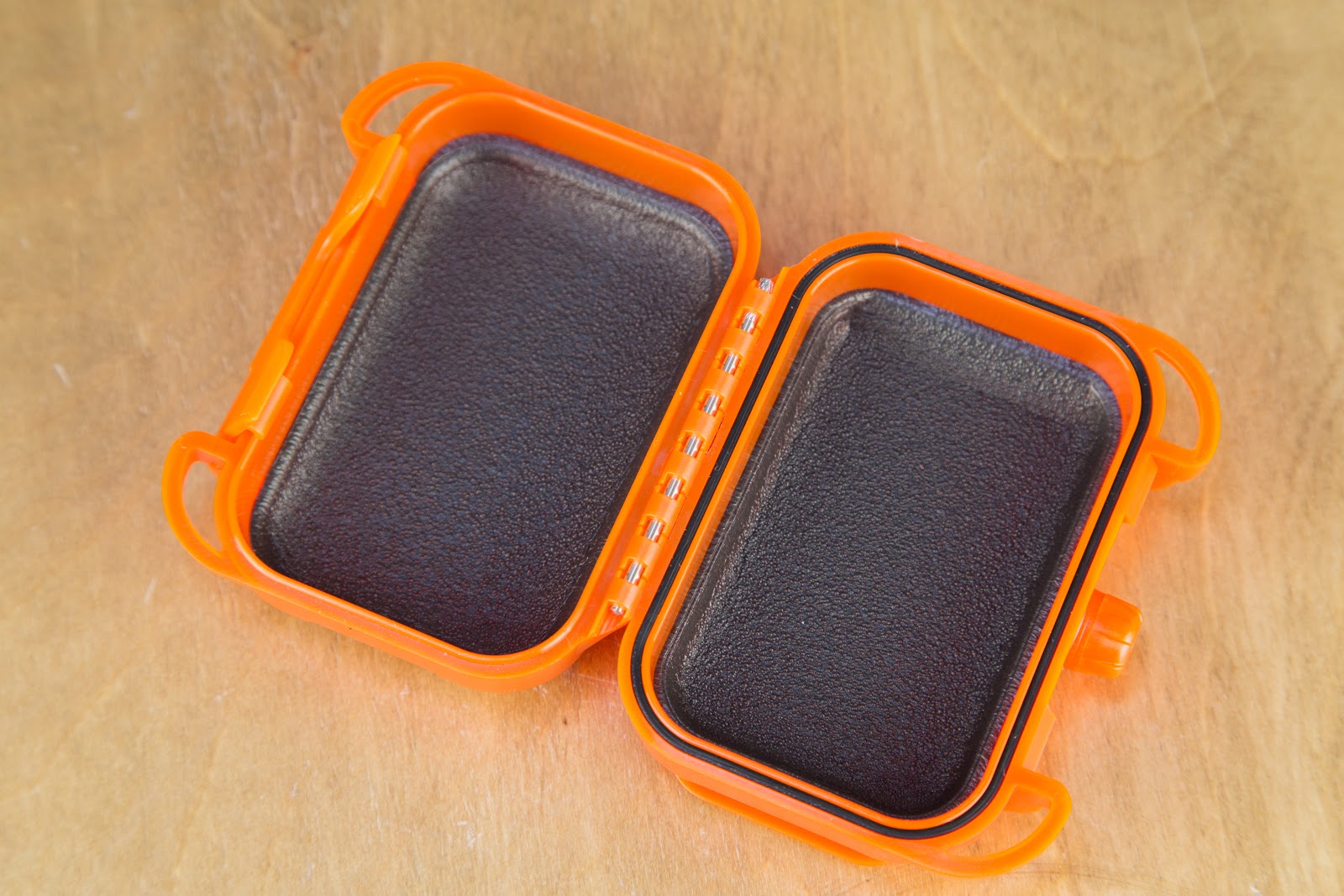
Nozzles counted nine pairs: they are of different sizes, some are made of silicone, others are made of foam material with a memory effect in order to achieve maximum sound insulation. One pair of silicone tips is located on the headphones themselves. What you really want to say thanks to the manufacturer, so it is for a device for cleaning earwax tips in the kit. Well, no one is immune from this, and it’s not just possible to keep such headphones clean, but necessary.
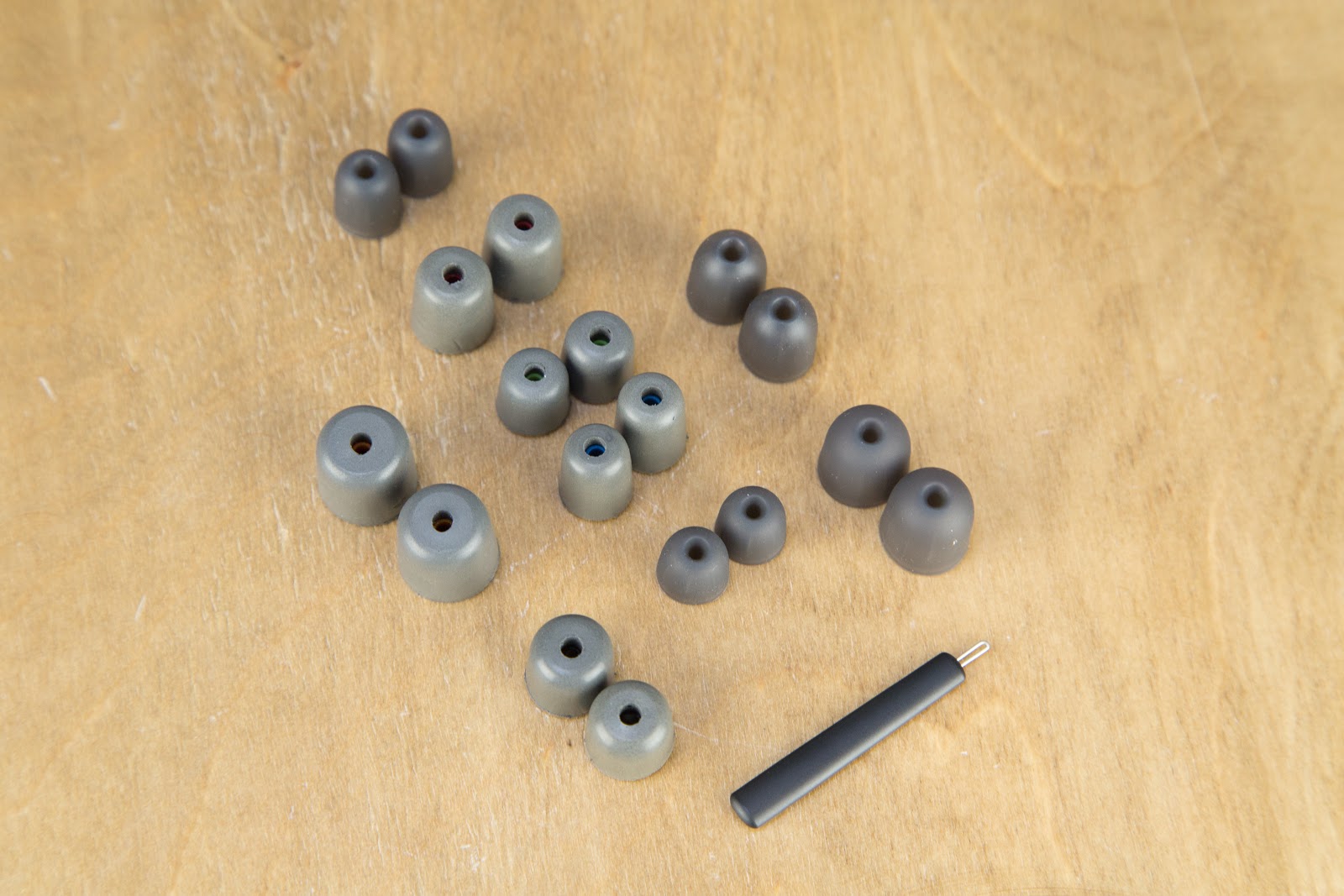
For a price that Westone UM Pro 30 is close to 30 thousand rubles, and the UM Pro 50 exceeds 46 thousand rubles, it’s nice to get such a rich bundle, but it should be noted, sometimes even expensive models of famous brands with a price tag higher than 70 thousand rubles will meet the maximum one more pair of replaceable foam nozzles.
As already mentioned above, the design of both models is almost identical, but thanks to the transparent case (you can choose a smoky version of Smoke), you can see that the headphones are different in hardware. It is noteworthy that the two extra emitters did not affect the size or weight of the UM Pro 50: apparently, for several decades, Westone had a good hand on reinforcement headphones.
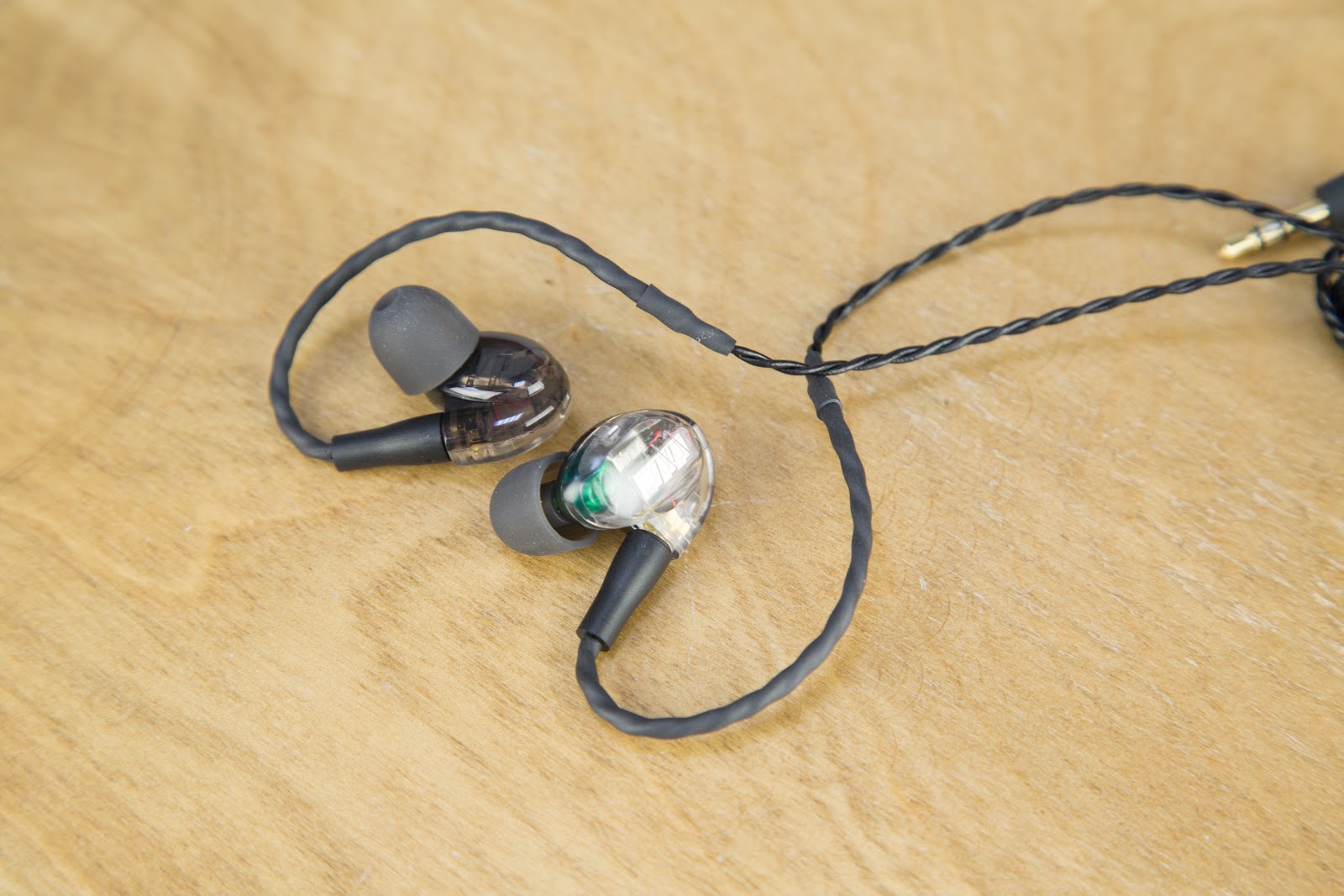
UM Pro 30/50 are designed for earworn. This method is not close to someone, but you appreciate all the advantages of this approach when you feel how reliably the headphones are fixed in the ear canal and the lack of a microphone effect. And for musicians, who often give as many layouts at concerts as athletes in weightlifting, this is a necessary characteristic, because there is nothing worse than a suddenly dropped earpiece during a performance.
What I want to praise the manufacturer for is a removable EPIC cable in both models - this allows for a little customization, since you can connect another wire (not MMCX, but still) if something happens to the complete one. The latter case, however, is unlikely, since the cable is Y-shaped and reinforced with aramid fibers. A nice bonus is the braid preventing tangling of the wire so that you can get the headphones from the case and immediately start listening.
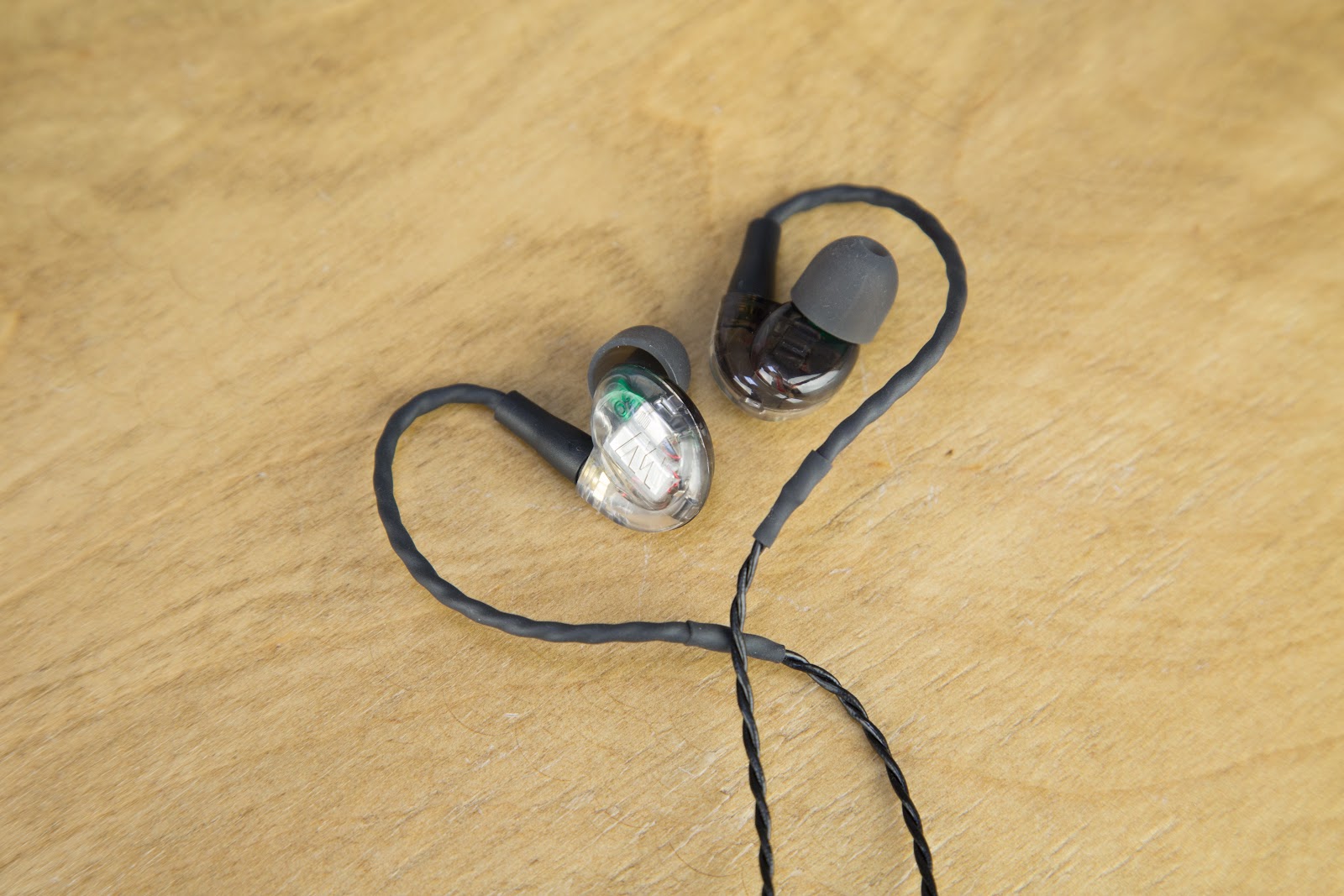
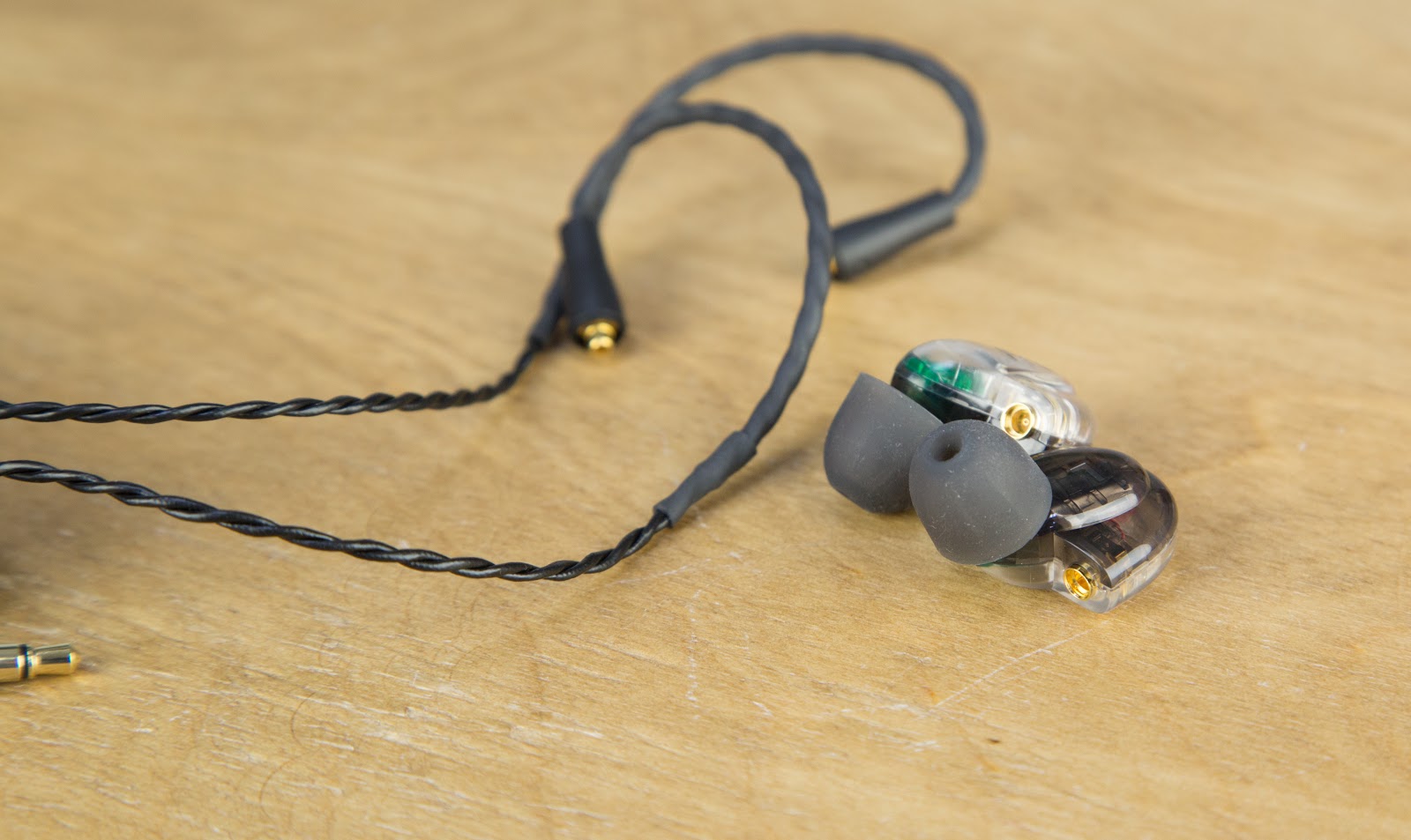
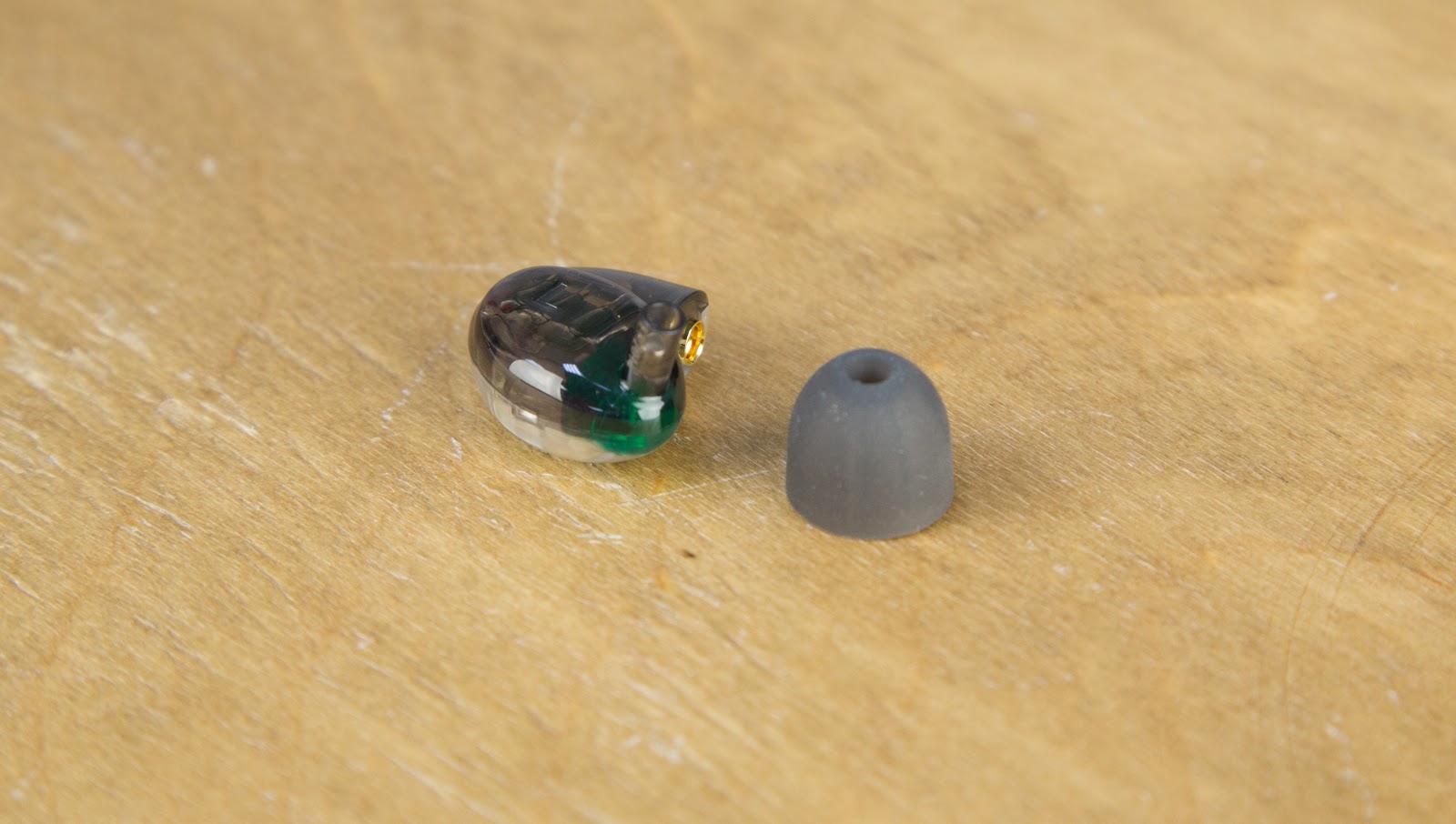
Due to their unusual “transparent” look, the headphones are immediately conspicuous and look futuristic, advanced audiophiles will definitely be delighted with this design, because under the Westone logo you can see many of the headphone components (in some cases you can’t do without a magnifying glass). Of course, you can watch as much as you like, but this is not the most important thing, is it?

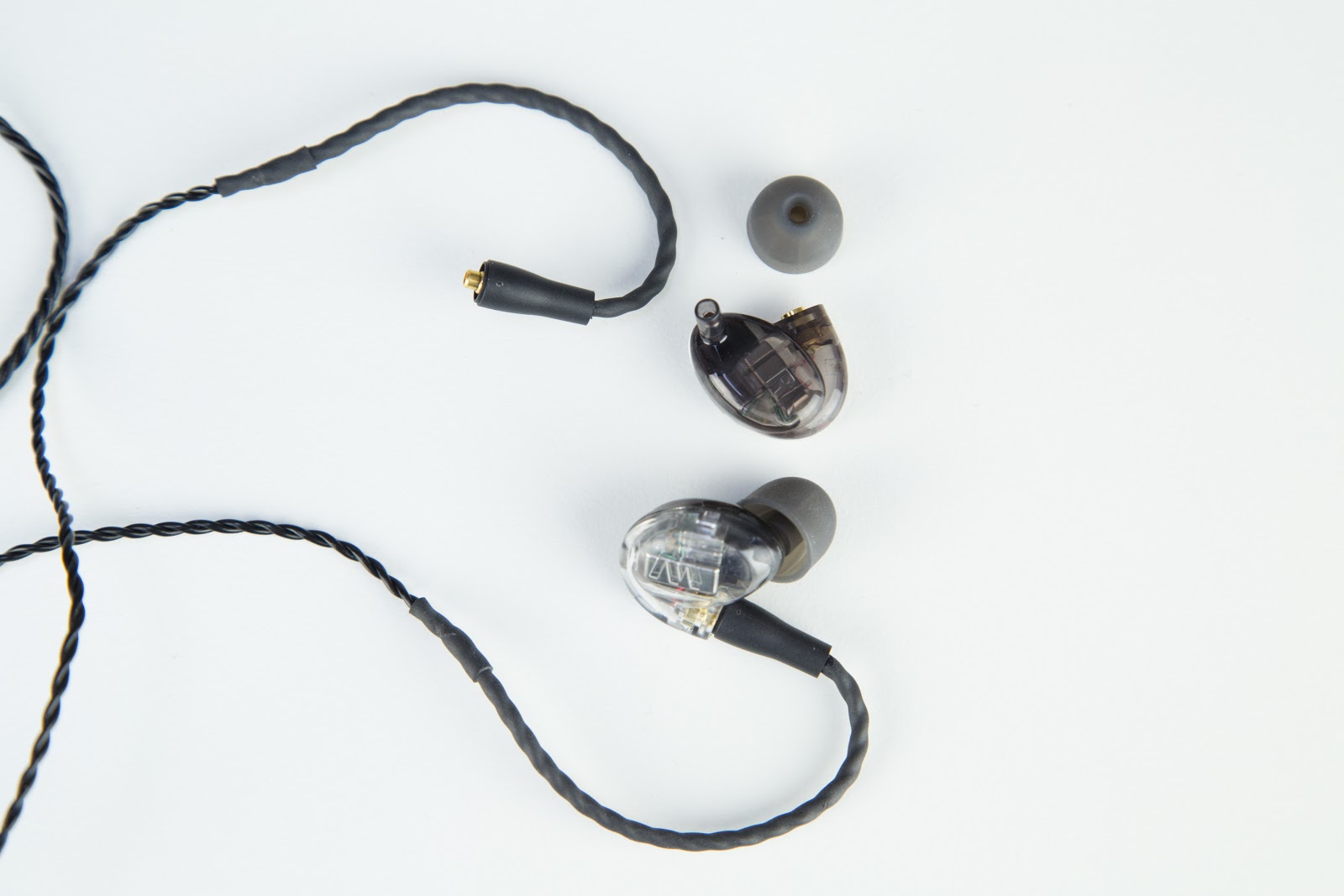
Spoiler: cons found.

Due to the coordinated work of the three-way crossover and separate drivers for low, mid and high frequencies, both models smoothly and in detail transmit the entire frequency range, but in the case of the UM Pro 50, two more are added to the three drivers. The 30th model has a reproducible frequency range of 20–18,000 Hz, in the 50th it is expanded to 20,000 Hz, while the sensitivity is higher for the low-end version - 124 dB / mW versus 115 dB / mW. The same applies to resistance, but in the case of reinforcing headphones this is not so relevant, especially since the difference is quite small.
We tested the UM Pro 30/50 with the younger Astell & Kern AK70, with which they were deployed no worse than if they were connected to the Utima SP1000. UM Pro 30 sounds clean, bright and very detailed, although in the upper frequency range this may not be so noticeable. Fans of bass “to get straight into the skull” pass by - here it is a bit deaf, but on vocal compositions the model clearly breaks out into leaders: so brightly the same Queen or David Bowie in their ears has not yet sounded.
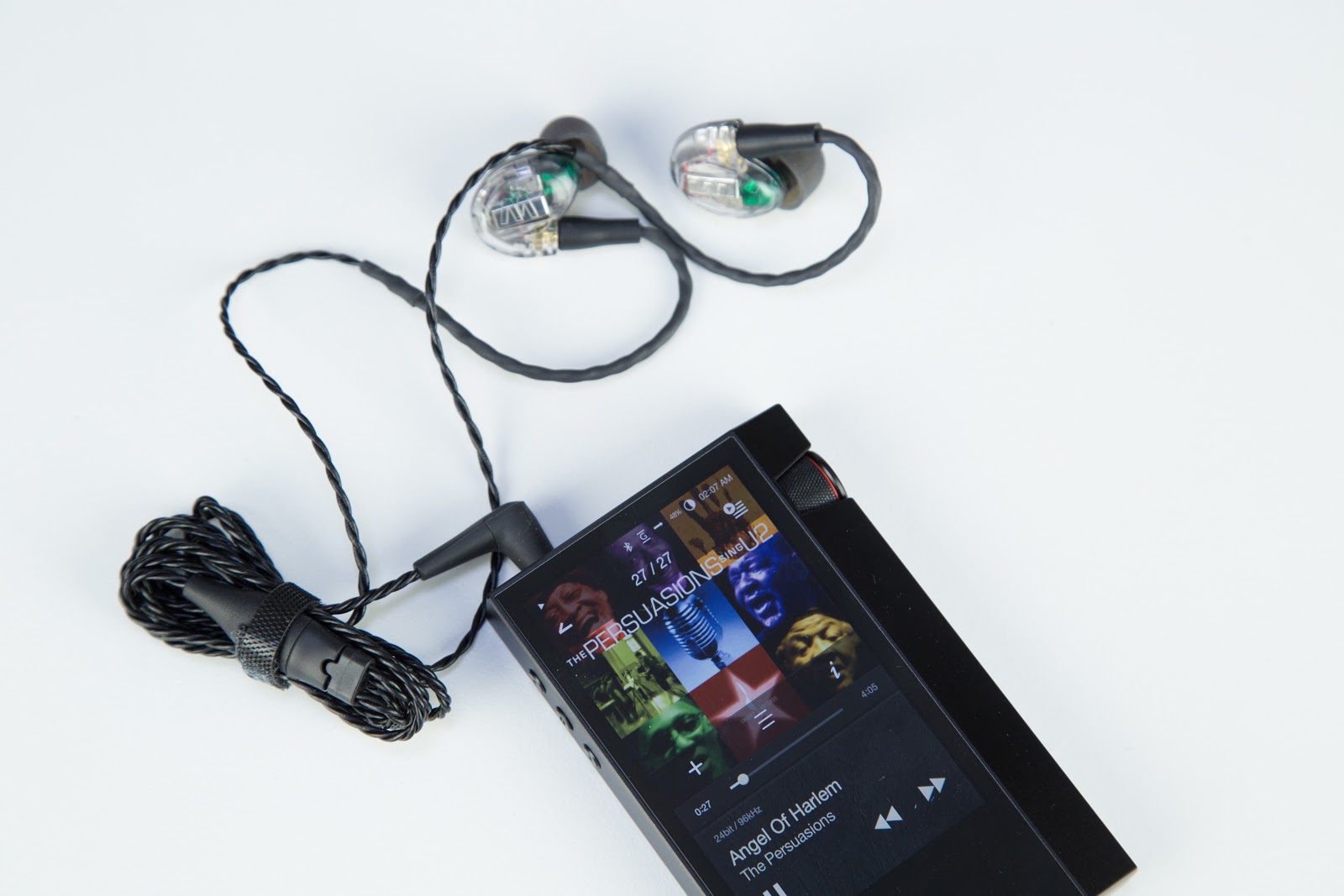
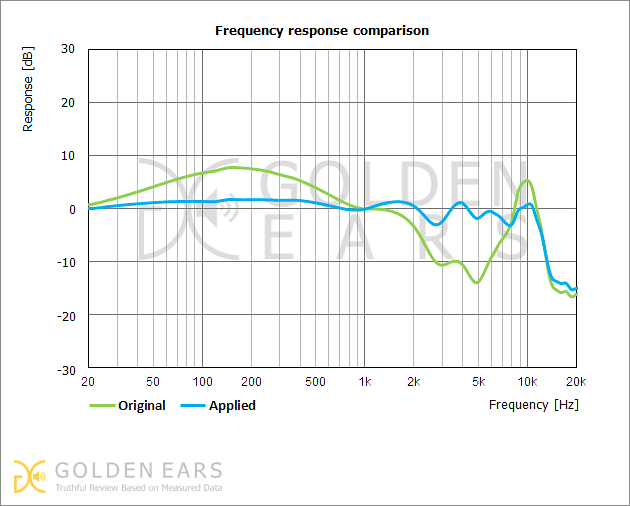
Westone UM Pro 30 Measurements
Unlike its younger brother, the UM Pro 50 has almost no flaws. We found the same bass, which was slightly lacking in the 30-ke, and the high-frequency toggle switch seemed to be shifted from the “medium” position to the “maximum”. At some point, you catch yourself thinking that you begin to open familiar tracks from the other side, and this is really a very cool feeling.
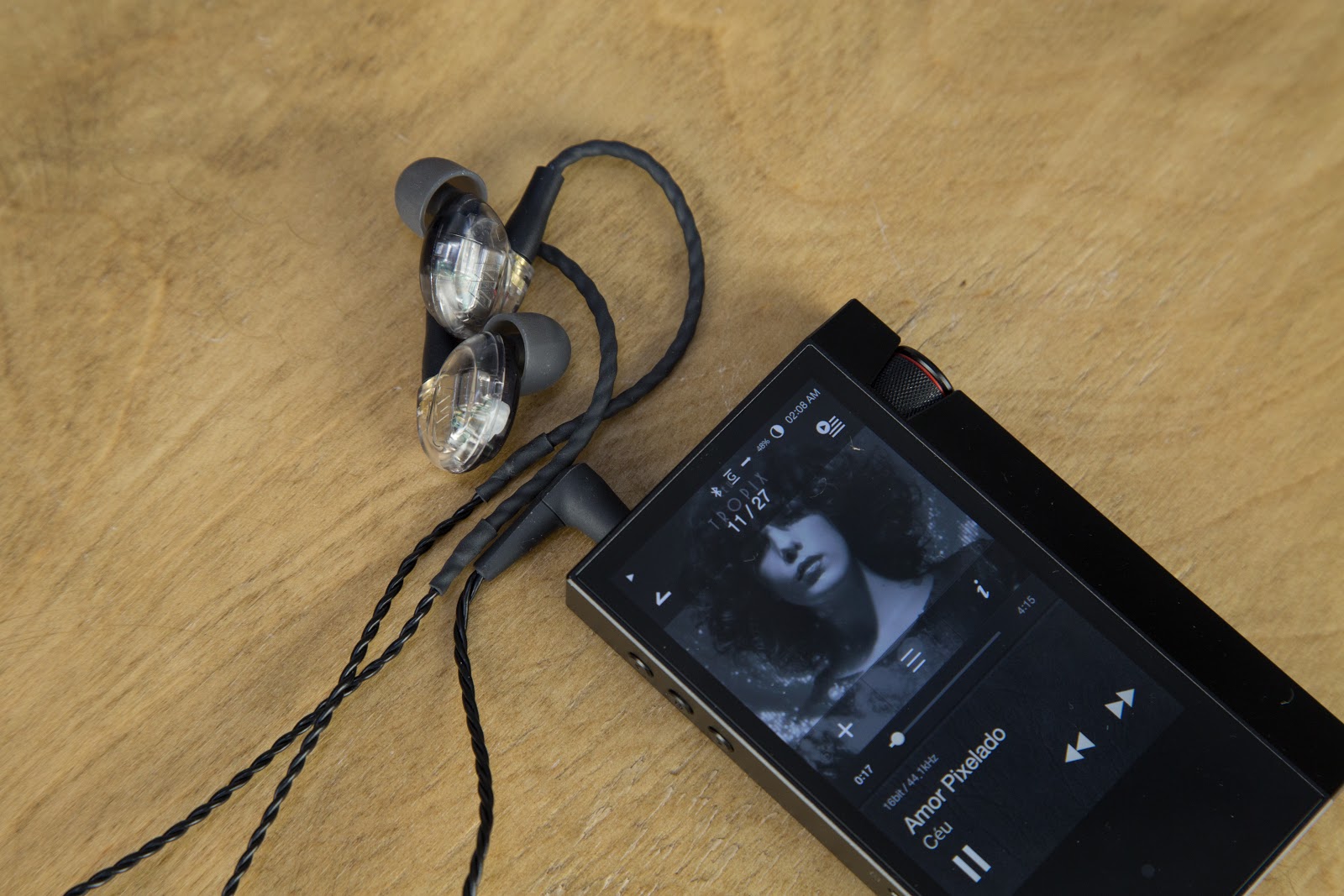
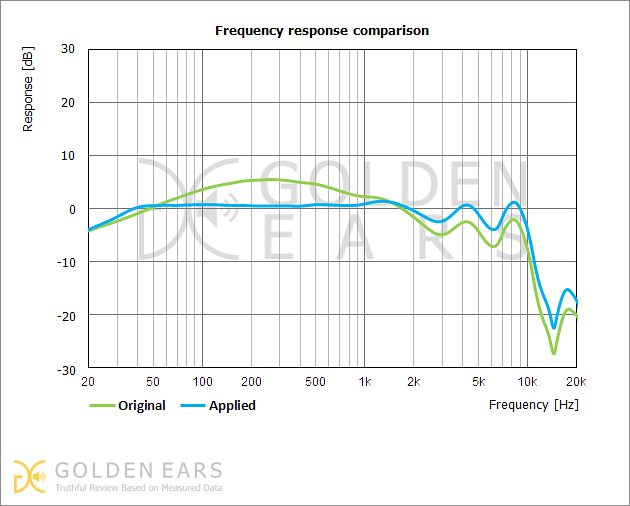
Westone UM Pro 50 Measurements
Sound insulation at both headphones at a high level - you can “punch” this protection, but you need to try hard. Genre predispositions for both models suggest themselves: for UM Pro 30, this is vocal jazz, instrumental and blues, the older model is better suited for hip-hop, hard rock and electronic music. But do not forget that this line of headphones is primarily intended for monitoring sound, and not so that you connect them to your smartphone and listen to tracks in MP3. In this case, the Westone has other models like the W series, but we'll talk about this some other time.
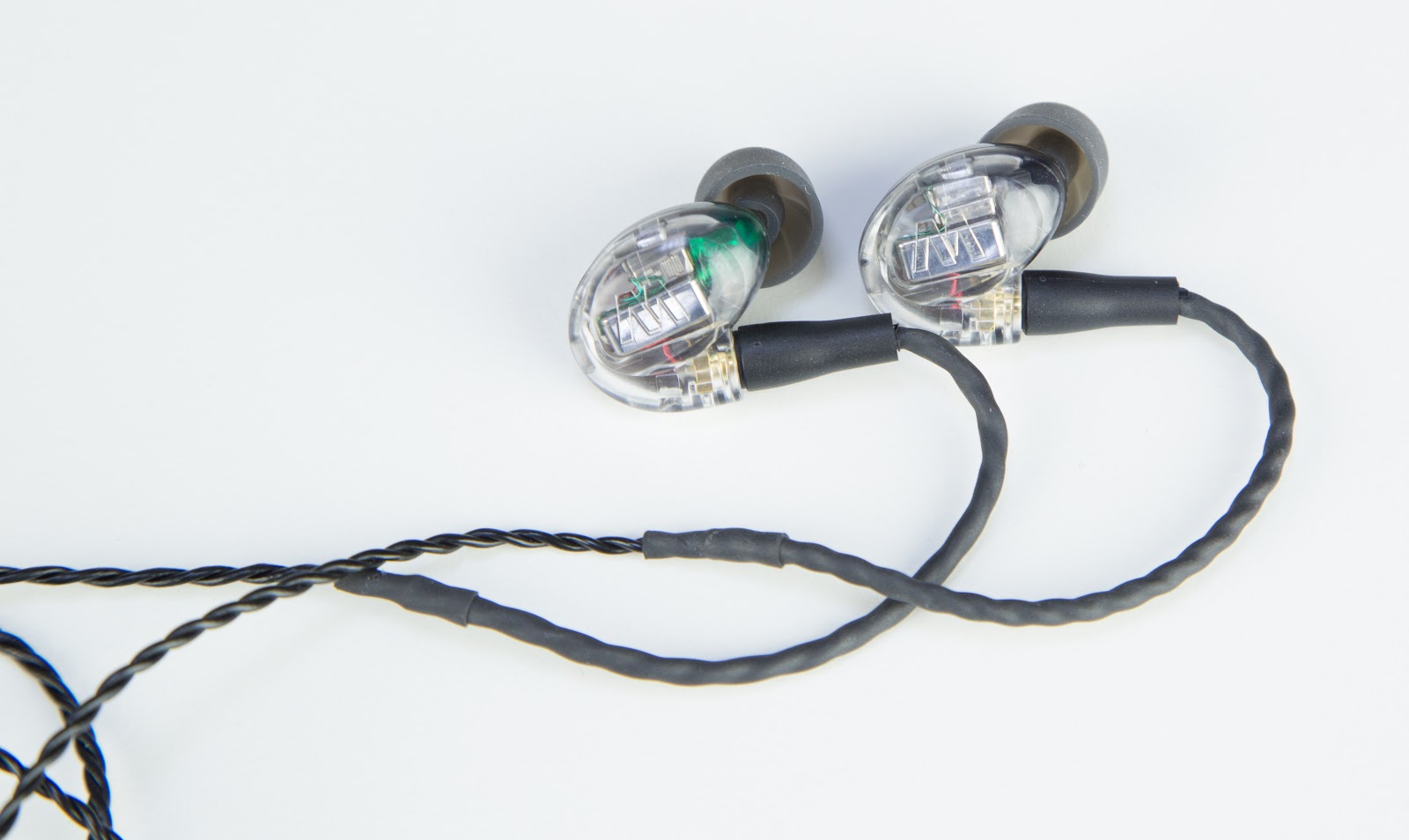
After many years in Westone, they did not forget about the subtleties in the production of headphones, like the shape of the ear canal, and this is pleasant. Of course, if you decide to purchase one of these models, no one will come to make a cast, but the custom one still remains, just as a huge assortment of interchangeable tips. The individual approach, as they say, is visible from afar, and when it is complemented by a sound that is difficult to compare with something else on the market, you want more of these headphones (the main thing is to find the right sound source like AK70 or older). But we must be prepared that it will be hard to return even non-mid-budget decisions.
Yes, the pricing of the UM Pro 30/50 cannot be called affordable, but when headphones are needed for work, you usually buy them once and for a long time. Moreover, devices have been developed for those who are actively “brewed” in the music industry, and these guys do not forgive mistakes in sound.

Of course, in the 60s of the last century, “armatures” already existed, but mostly they were used either in military or for medical purposes, making hearing aids noticeably smaller and more comfortable to wear. Later, the market for headphones with a balanced anchor was replenished with consumer models, but manufacturers created them in most cases universal, forgetting that people have a different structure and shape of the ear. Westone paid attention to this, deciding to engage in the production of in-channel audio devices for a specific shape of the auricle.
Almost until 1990, the company successfully manufactured custom-fit headphones: for this, the specialists first poured a special molding foam into the ear canal of the client, which hardened in the ear and allowed it to be similar to the shape of a future earphone. Then a casting mold was created from the cast, and the “stuffing” of the device was born.

Others quickly turned their attention to such an unusual way of creating headphones. Etymotic company generally simplified the process - sent the user the foam with which he made the form of his ear canal, and then sent it back to the manufacturer to make headphones. However, the accuracy of this method was questionable, and by the 90s of the 20th century, no one but Westone could produce more accurate channel forms, so the two companies began to work together. Then they were joined by Shure, Ultimate Ears and other brands.
Over time, Westone began to enjoy great popularity among musicians. When the latter needed high-quality headphones, they knew where to go, and the manufacturer himself received their ear casts, the number of which exceeded several thousand. Westone's clients included the Red Hot Chilli Peppers, the Rolling Stones, and Alex Van Halen himself. And initially, Van Halen turned to the legendary Jerry Harvey with a problem, because during the concerts the musicians hardly heard each other because of the drum set, and Harvey had already followed those same custom-fit to the Westone.

The choice of Westone knowingly fell on rebar headphones, because they not only allow to combine high-quality sound and compact dimensions. Anchor emitters fit freely in a small case, closed on all sides, besides they are free from distortions caused by the shape of the diffuser. Now Westone headphones are used almost everywhere - from American military aviation to medicine (digital earplugs protect hearing from loud noises), but today we’ll talk about the followers of the UM Pro 30 and Um Pro 50 consumer accessories line, because the whole UM Pro series isn’t long ago received an update.
The UM line is designed specifically for musicians, so the production of these headphones Westone suited very responsibly. Headphones are assembled by hand in the USA, and although the ear canal casts are not made by the company, the kit includes as many True-Fit silicone and foam nozzles with memory effects of different sizes that everyone can find the right ear cushions for a comfortable fit. Compared to the previous line, the new UM Pros have a more interesting design, thanks to which the components inside the case can now be considered even better. Although the technical characteristics have not changed (except for the UM Pro 10, the impedance was reduced to 19 Ohms), but the Westone heard their fans and added cables with the latest MMCX connectors.
The entire line is represented by the UM 1 (with one radiator), UM Pro 10, UM Pro 20 (two radiators), UM Pro 30 and UM Pro 50 models. They decided not to take a closer look at the last two versions: the UM Pro 30 is the most popular model in series, and the UM Pro 50 - the most powerful.
UM Pro 30 is a three-driver model, where each channel has a separate radiator for medium, low and high frequencies. The inscription "MONITOR" was not in vain here, since the main task of these headphones is to monitor the music on the stage when the musician performs the track. In the studio, no one prohibits the use of them either, but first of all the manufacturer provides a solution that perfectly isolates from extraneous noise.

In the UM Pro 50 , as it is not difficult to guess, there are already five drivers, and the main differences between the headphones from the 30th model lie precisely inside and in sound - both models look almost the same. Unless the transparent case gives out the senior model in a ruler.

Specifications
| Characteristic
| UM Pro 30
| UM Pro 50
|
| Sound Emitter Type
| Reinforcement
| Reinforcement
|
| Fit to ears
| Plugin
| Plugin
|
| frequency range
| 20 - 18 000 Hz
| 20 - 20 000 Hz
|
| Sensitivity
| 124 dB
| 115 dB
|
| Resistance
| 56 ohm
| 45 ohm
|
| Plug
| 3.5 mm
| 3.5 mm
|
| Removable cable
| there is
| there is
|
| Cable type
| Straight Y-shaped
| Straight Y-shaped
|
| Cable metric
| 1.3 m
| 1.3 m
|
| Weight
| 12.7 g
| 12.7 g
|
Equipment

The UM Pro 30 and Um Pro 50 are identical in delivery (except that the headphones themselves are different). The first thing that catches your eye is a small shockproof case for carrying headphones, from the inside it is covered with a special foam material to minimize mechanical effects.

You open the case and at first you are at a loss: where are the interchangeable nozzles? After all, they are usually put here to save space. Westone decided to use the box space to the maximum and placed a bag with ear pads under the headphones themselves.


Nozzles counted nine pairs: they are of different sizes, some are made of silicone, others are made of foam material with a memory effect in order to achieve maximum sound insulation. One pair of silicone tips is located on the headphones themselves. What you really want to say thanks to the manufacturer, so it is for a device for cleaning earwax tips in the kit. Well, no one is immune from this, and it’s not just possible to keep such headphones clean, but necessary.

For a price that Westone UM Pro 30 is close to 30 thousand rubles, and the UM Pro 50 exceeds 46 thousand rubles, it’s nice to get such a rich bundle, but it should be noted, sometimes even expensive models of famous brands with a price tag higher than 70 thousand rubles will meet the maximum one more pair of replaceable foam nozzles.
Appearance
As already mentioned above, the design of both models is almost identical, but thanks to the transparent case (you can choose a smoky version of Smoke), you can see that the headphones are different in hardware. It is noteworthy that the two extra emitters did not affect the size or weight of the UM Pro 50: apparently, for several decades, Westone had a good hand on reinforcement headphones.

UM Pro 30/50 are designed for earworn. This method is not close to someone, but you appreciate all the advantages of this approach when you feel how reliably the headphones are fixed in the ear canal and the lack of a microphone effect. And for musicians, who often give as many layouts at concerts as athletes in weightlifting, this is a necessary characteristic, because there is nothing worse than a suddenly dropped earpiece during a performance.
What I want to praise the manufacturer for is a removable EPIC cable in both models - this allows for a little customization, since you can connect another wire (not MMCX, but still) if something happens to the complete one. The latter case, however, is unlikely, since the cable is Y-shaped and reinforced with aramid fibers. A nice bonus is the braid preventing tangling of the wire so that you can get the headphones from the case and immediately start listening.



Due to their unusual “transparent” look, the headphones are immediately conspicuous and look futuristic, advanced audiophiles will definitely be delighted with this design, because under the Westone logo you can see many of the headphone components (in some cases you can’t do without a magnifying glass). Of course, you can watch as much as you like, but this is not the most important thing, is it?


Sound
Spoiler: cons found.

Due to the coordinated work of the three-way crossover and separate drivers for low, mid and high frequencies, both models smoothly and in detail transmit the entire frequency range, but in the case of the UM Pro 50, two more are added to the three drivers. The 30th model has a reproducible frequency range of 20–18,000 Hz, in the 50th it is expanded to 20,000 Hz, while the sensitivity is higher for the low-end version - 124 dB / mW versus 115 dB / mW. The same applies to resistance, but in the case of reinforcing headphones this is not so relevant, especially since the difference is quite small.
We tested the UM Pro 30/50 with the younger Astell & Kern AK70, with which they were deployed no worse than if they were connected to the Utima SP1000. UM Pro 30 sounds clean, bright and very detailed, although in the upper frequency range this may not be so noticeable. Fans of bass “to get straight into the skull” pass by - here it is a bit deaf, but on vocal compositions the model clearly breaks out into leaders: so brightly the same Queen or David Bowie in their ears has not yet sounded.


Westone UM Pro 30 Measurements
Unlike its younger brother, the UM Pro 50 has almost no flaws. We found the same bass, which was slightly lacking in the 30-ke, and the high-frequency toggle switch seemed to be shifted from the “medium” position to the “maximum”. At some point, you catch yourself thinking that you begin to open familiar tracks from the other side, and this is really a very cool feeling.


Westone UM Pro 50 Measurements
Sound insulation at both headphones at a high level - you can “punch” this protection, but you need to try hard. Genre predispositions for both models suggest themselves: for UM Pro 30, this is vocal jazz, instrumental and blues, the older model is better suited for hip-hop, hard rock and electronic music. But do not forget that this line of headphones is primarily intended for monitoring sound, and not so that you connect them to your smartphone and listen to tracks in MP3. In this case, the Westone has other models like the W series, but we'll talk about this some other time.
Custom-fit forever

After many years in Westone, they did not forget about the subtleties in the production of headphones, like the shape of the ear canal, and this is pleasant. Of course, if you decide to purchase one of these models, no one will come to make a cast, but the custom one still remains, just as a huge assortment of interchangeable tips. The individual approach, as they say, is visible from afar, and when it is complemented by a sound that is difficult to compare with something else on the market, you want more of these headphones (the main thing is to find the right sound source like AK70 or older). But we must be prepared that it will be hard to return even non-mid-budget decisions.
Yes, the pricing of the UM Pro 30/50 cannot be called affordable, but when headphones are needed for work, you usually buy them once and for a long time. Moreover, devices have been developed for those who are actively “brewed” in the music industry, and these guys do not forgive mistakes in sound.
All Articles